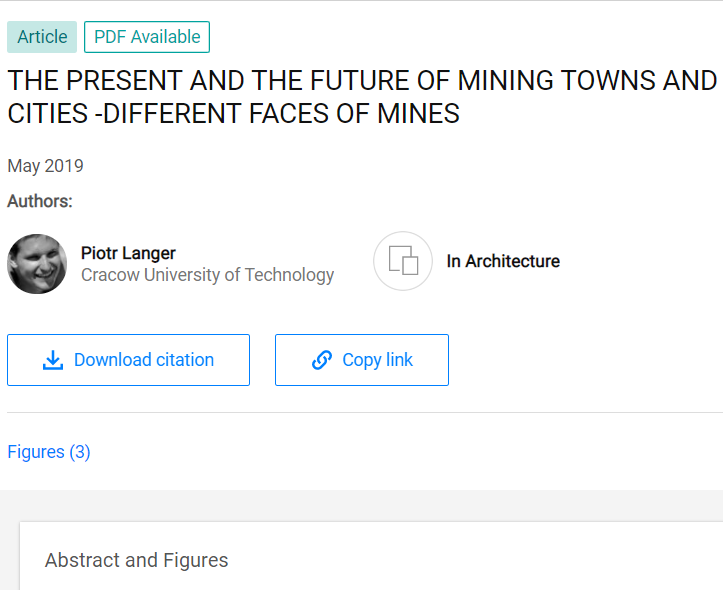The Present and the Future of Mining Towns and Cities
Different Faces of Mines

A lot of research into the present state and the future of cities tends to be focused on mining towns and cities. It is reflected in a wide range of publications as well as in the popularity of conceptual designs for development of areas or facilities connected with mining. The reason for this is the variety and complex nature of phenomena and problems occurring in mining towns or cities, which determine both their present image and the possible directions of future transformations. Researchers from different fields study economic and social issues related to the growth of mining centres, but they also focus on aspects of key significance to urban spaces, landscape and natural environment, including: the way the mining operations affect their environs, the use and aesthetic function of post-mining facilities and their role in the development of a city or town after the raw materials have stopped being mined, or re-naturalisation of areas degraded by mining operations.
The rank of the signalled problems has been defined by the sheer number of mining towns and cities, where the tradition of excavating natural materials frequently goes hundreds or thousands years back. There are numerous such areas in the world, they are also present in our country. Regardless of the concentration of mining facilities and their accompanying industrial plants, mining regions are usually highly urbanised areas, encompassing large agglomerations and conurbations, many of which perform the function of key economic and social metropolitan centres in the scale of the whole country.
The presented data indicate that the problems associated with the contemporary development of mining towns and cities are important not only in Poland and Germany, but also in other countries where mining and further processing of native natural resources are of considerable economic significance.
The problems discussed further on in the article are closely connected with urban space. They are illustrated by examples of various mines in Poland and abroad which remain in diverse relations with the structure of the town or city since some of them are situated within densely developed urban areas, at the city outskirts or in open areas of the suburbs. Regardless of the different spatial relations – mines and their towns or cities remain inseparably bound in the functional as well as visual and compositional aspects.
This resource is part of the Mining Towns Collection kindly sponsored by the Municipal Capability and Partnership Programme. Abstract based on source.


Comments